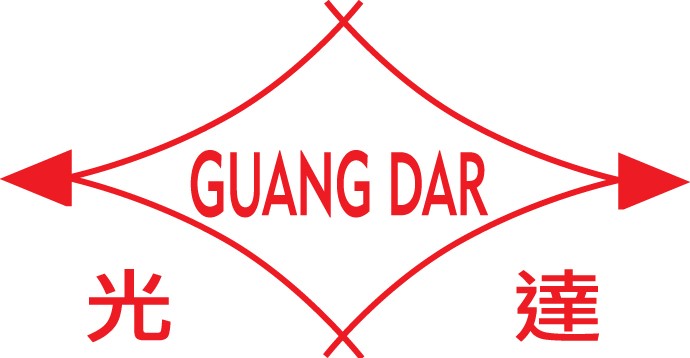2025-02-05
3 Types of Electromagnetic Tables and Their Applications

Electromagnetic tables are an efficient and effective device when it comes to securing the metal workpiece in a machining process. This type of work-holding system uses electromagnetic force, or Lorentz force, to hold a piece of metal in place. Inside the electromagnetic table, there are plenty of cells that consist of a core wrapped by a conductor coil. The core is made of ferromagnetic materials. When an electric current passes through the coil, the core becomes a magnet. With these cells together, the electromagnetic table can generate a strong attraction force to hold the workpiece.
Guang Dar manufactures a series of electromagnetic work-holding devices and they come in various types and designs. In the following sections, we are going to break down the types, and particular applications of our electromagnetic tables. Let’s read on.
Types of Electromagnetic Tables
In terms of the external configuration, there are four types of electromagnetic tables, including rectangular (square), round, block (bar), and rotary (tilting) types. Some of these machines do not appear to be a ‘table’ that much, but they all serve the same purpose and share a similar structural design. They are designed to hold a part and constructed with a base containing the electromagnetic units, poles, top plate, and power-control unit. Let’s go over these electromagnetic tables and see why they come down to such forms and styles.
Rectangular Table
The rectangular electromagnetic chuck is pretty much the ‘standard’ type of table we are familiar with because of its tablet-like configuration. Since the rectangular type has a shallow, flat structure, it is also called the electromagnetic plate. The top plate is typically rectangular but there are also models with a square top plate as well. You can easily spot parallel lines or chessboard-like marks on the top plate. Those marks indicate the poles of the electromagnetic units within the chuck. Guang Dar has a full selection of both standard-pole and fine-pole electromagnetic/magnetic tables.
The electromagnetic table with a rectangular top plate is excellent in holding sheet metals and thin metal plates. The most distinctive feature of this type is that you can use multiple rectangular chucks at once to process wide sheet metal. The main applications of this type include grinding, milling, and sinker EDM. It is not recommended to perform drilling, tapping, or punching on an electromagnetic table because there is a risk of penetrating the top plate and damaging the interior components if the feeding depth is not under proper control. Should you need the table for drilling applications, please contact us for consultation in advance. (Click here to check out Guang Dar’s standard electromagnetic tables.)
Round Table
The round electromagnetic table is also commonly known as the circular table. It describes the round-shaped configuration of the device. You can find multiple pole designs on the round electromagnetic table, such as parallel poles, radial poles, concentric poles, square poles, or combinations of these pole designs. Unlike the rectangular type that is designed specifically for milling and grinding operations, the round/circular type can not only work with the milling/grinding machine but also the lathe and the machining center.
The round-shaped top plate can effectively clamp cylindrical workpieces for turning operations. The machine tools that many CNC shops implement with the round electromagnetic table include the lathe, VTL, VMC, and HMC. However, when using the round table on the horizontal machines, the L/D is of great importance. L/D refers to the length-to-diameter ratio. The table is likely to lose the clamping (magnetic) force during operation given a workpiece with a great L/D. That said, the custom design (in terms of clamping force, table size, etc.) is available to mitigate such circumstances in the actual application. (Click here to check our round electromagnetic tables.)
Tilting Table
The tilting-type magnetic table has a bar-like configuration with the stand structure on the two ends. There is a shaft on one end to adjust the tilting angle. There are markings on the tilting axis and an indicator to show the degrees of the tilting angle. It is not used to handle large workpieces like the rectangular and round types do. Instead, it is designed to clamp small-scale workpieces. Also, instead of allowing the freedom of large surface machining, it provides an additional tilting axis for the subtle, angled cutting. Because precision is required when performing angled cutting, a great clamping force is necessary to ensure the firm grip of the workpiece. Therefore, the tilting magnetic table typically applies the fine-pole design. Some tilting magnetic table features multi-face clamping capability to further increase the versatility of the machine. (Check here: Guang Dar’s tilting electromagnetic chucks.)
Final Words
Though the electromagnetic table types we talked about in this article work based on the same mechanism, the difference in their structural design grants them distinctive characteristics in terms of applications and types of workpieces they work with. It is recommended to choose the electromagnetic table based on the nature of your operations. Should you need more information about Guang Dar’s electromagnetic/magnetic chucks and how to choose one, please contact us right away.
GUANG DAR MAGNET INDUSTRIAL LTD.
TEL : 886-4-24360757
FAX : 886-4-24366225
No. 24, Ln. 123, Sec. 1, Dongshan Rd., Beitun Dist., Taichung City 406011 , Taiwan
